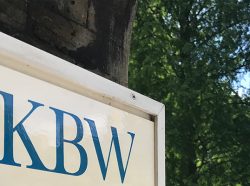This post follows and updates an earlier post in March which considered the Coronavirus Job Retention Scheme as it was then set out in Government Guidance.
Since announcing the Coronavirus Job Retention Scheme (the “Scheme”) in mid-March, the Government has issued several iterations of Guidance which explain the Scheme – not all in the same way. On 15 April 2020, HMT issued the ‘Coronavirus Act 2020 Functions of Her Majesty’s Revenue and Customs (Coronavirus Job Retention Scheme) Direction’ (the “Direction”).[1] It is the Direction which finally provides a basis in law for the Scheme and to which close attention should now be paid.
As anticipated, the Scheme provides for payments to be made from HMT to employers for the costs of employing eligible furloughed employees during the coronavirus pandemic. The Scheme applies to payments by employers in relation to earnings paid, or payable, between 1 March 2020 and 31 May 2020 (paragraph 12, Direction).
HMT has the power to issue a further direction to extend this period, and to make lawful alteration to the Scheme generally. HMT announced on 17 April 2020 that it intends to extend the Scheme to the end of June 2020.
What the Scheme reimburses
As had been foreshadowed by the various versions of Guidance, payments under the Scheme extend beyond employees’ salaries. Paragraph 8 of the Direction sets out that HMT may reimburse:
- The gross amount of earnings already paid or reasonably expected to be paid by the employer to a furloughed employee during 1 March 2020 – 31 May 2020. However, this cannot exceed the lower of £2500/month and 80% of an employee’s “reference salary” (on which, see further below).
- Employer NI contributions arising from the payment of the gross amount of earnings.
- The amount allowable under the Scheme as a claimable pension contribution (calculated under paragraphs 8.9-8.12, Direction).
The definition of “reference salary” is provided by paragraph 7 of the Direction. A notable feature is that it excludes “anything which is not regular salary or wages” (paragraph 7.3). “Regular salary or wages” are then further defined by paragraphs 7.4 – 7.5. These exclude amounts which are conditional or vary according to factors such as the performance of the employee or the business (i.e., commission) or the discretion of the employer (i.e., gratuity).
Depending on the industry, this may significantly reduce what the Scheme will pay out, compared to employees’ typical take-home pay before the coronavirus pandemic. Given that one of the aims of the Scheme is intended to enable employees to experience relative continuity of wages, this is a surprising caveat. However, it appears that this one of the practical anti-abuse measures designed into the Scheme, to prevent potential exaggeration of the amounts claimed under it.
Employers are also not able to claim under the Scheme for amounts which they are liable to pay to employees as Statutory Sick Pay (“SSP”), Maternity Pay, Adoption Pay, Paternity Pay, Shared Parental Pay or Parental Bereavement Leave (paragraphs 8.6 – 8.7, Direction).
Which ‘employees’ the Scheme covers
The Direction side-steps complex issues relating to employee and worker status. It instead provides instead a wide definition of ‘employee’ by reference to provisions of the Income Tax Earning and Pensions Act 2003, as extended by section 5 of that Act, the Income Tax (Pay As You Earn) Regulations 2003 and paragraphs 13.2 and 13.3 of the Direction (paragraph 13.1(e)).
As to when employees must have been employed by the employer, this may be either on or before 19 March 2020 (when the Scheme was first announced) or on or before 28 February 2020.
In relation to the latter date, the Revised Guidance [2] issued on 28 March 2020 HMT had stated employees who were on an employer’s payroll on 28 February 2020 but who were made redundant or stopped working on or after that date could be re-employed and put on furlough, and a valid claim made for their wages from the date of furlough. This is now encapsulated in paragraphs 5(a) and 13.1(a) of the Direction. This will be welcome by employers and employees alike. Employers should note that there are different salary calculation provisions for these reengaged workers contained in paragraphs 7.16 – 7.17 of the Direction.
Establishing eligibility: the requirement to cease all work
Paragraph 6 of the Direction defines how an employer can bring its employees within the Scheme. This that “by reason of circumstances arising as a result of coronavirus or coronavirus disease” the employer must instruct the employees to “cease all work in relation to their employment”, and the period for which the employees cease work must be 21 calendar days or more. This includes not working indirectly for the employer or for a person connected to the employer, even if is a charity. “Connection” is defined by paragraph 13.4 of the Direction.
There are some carveouts to this. Any agreed training which employees are undertaking which is directly relevant to employment does not count as work for the purposes of the Scheme (paragraph 6.8). This therefore may continue.
In the opposite direction, any employee who is entitled to SSP at the time when the furlough instruction is given by the employer remains so (as set out above). The employer must continue to pay SSP and will not be reimbursed for it (paragraphs 8.7 – 8.8). The 21-day period necessary to claim for a furloughed employee does not begin to run until the entitlement to SSP has ended. However, if a furloughed employee later becomes entitled to SSP again this does not pause or restart the clock on the calculation of the period (paragraph 6.3).
Nonetheless, the Direction draws the ceasing work requirement very widely, and more so than some had expected; it is “all work”. The cautious employer will want to take this literally. There are obvious practical and commercial reasons why an employer would prefer to have furloughed employees maintain a light-touch review of their email inbox to respond to critical emails, or to have them provide contribution on discrete matters as required. Unfortunately, the literal language of the Scheme does not permit such activity.
Support for the restrictive interpretation of permissible work under the Scheme is in paragraph 6.6 of the Direction. This defines permissible work for furloughed directors who are employees very narrowly as only that “to fulfil a duty or other obligation arising by or under an Act of Parliament relating to the filing of company accounts or provision of other information relating to the administration of the director’s company”.
The Direction creates an express requirement that furlough be agreed in writing (specifically, that the employee will cease all work in relation to their employment – paragraph 6.7). It remains unclear whether such written agreement must be made prior to the period of furlough to be effective for the purposes of the Scheme. However, the prudent course for an employer seeking to rely on the Scheme who has not already rendered furlough agreements to writing is to do so without delay.
Making a claim
The Scheme opens for claims on 20 April 2020. Claims can be made in relation to each PAYE system the employer has registered with HMT, and if an employer has more than one it should claim under each separately (paragraphs 3-4, Direction). HMT has committed to making payments within 6 days of receiving a claim.
The Government has issued a short guide [3] for employers seeking to claim. It should be noted that this stipulates that employers can only make one claim (for all employees) within a claim period and that no edits can be made to a claim once it is submitted. Although the same is not necessarily obvious from the language of the Direction (although paragraph 2.3 provides HMT with a wide discretion to proscribe the form and manner of claims), employers will want to err side of caution and comply in order to ensure that payments are made as quickly as possible.
Wider ongoing considerations
In the earlier blog post on the Scheme, several wider issues arising from the Scheme relating to employment law were considered. These issues continue to apply.
A key practical point for employers is to anticipate the current end date of the Scheme (31 May 2020 under the Direction, but now likely to be end of June 2020) and determine whether they will face a redundancy situation if the Scheme is not extended further. If they envisage proposing 20 or more redundancies at that date, then section 188 TULR(C)A 1992 imposes a statutory duty to consult employee representatives. This duty will be case-specific, and advice may be needed. It may be that the extent of the duty it is less stringent in the coronavirus context, but employers should critically consider how a consultation could be fulfilled even in these exceptional times (including by remote electronic means) and take all appropriate steps now.
This post may not be relied upon as legal advice. 11KBW’s barristers are able to assist with any queries.








